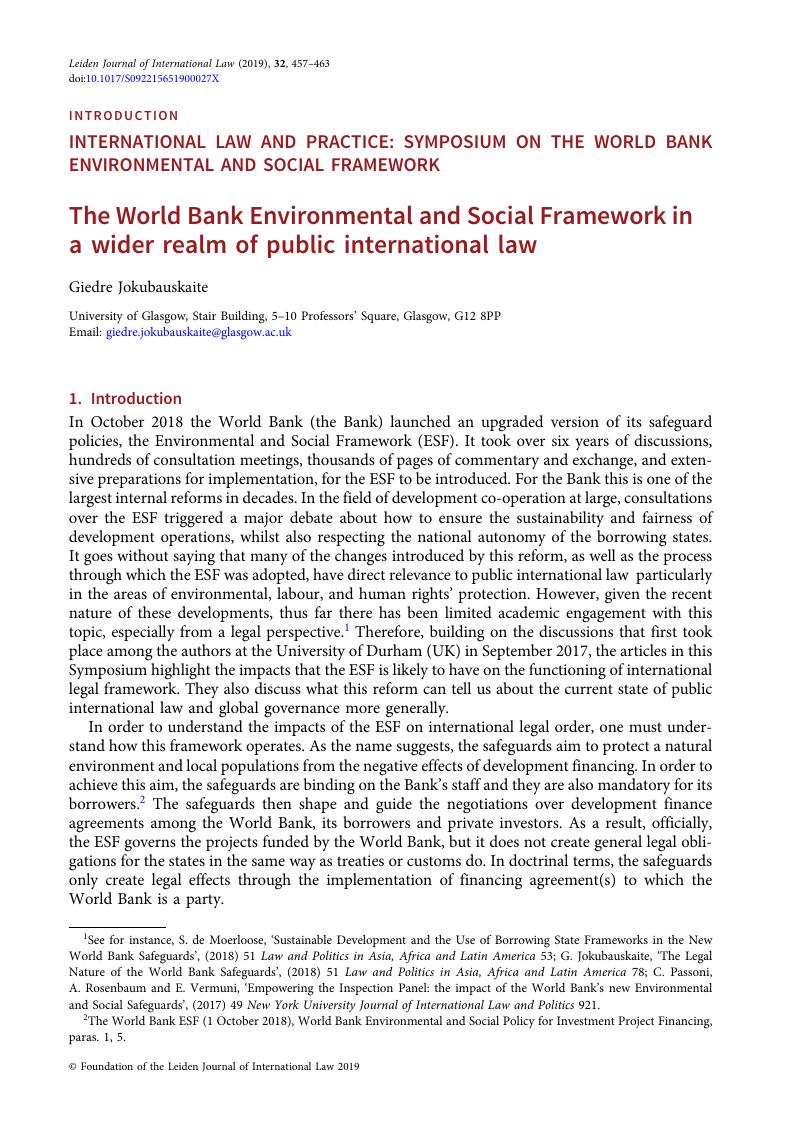Article contents
The World Bank Environmental and Social Framework in a wider realm of public international law
Published online by Cambridge University Press: 24 June 2019
Abstract

- Type
- INTRODUCTION
- Information
- Copyright
- © Foundation of the Leiden Journal of International Law 2019
References
1 See for instance, de Moerloose, S., ‘Sustainable Development and the Use of Borrowing State Frameworks in the New World Bank Safeguards’, (2018) 51 Law and Politics in Asia, Africa and Latin America 53 Google Scholar; Jokubauskaite, G., ‘The Legal Nature of the World Bank Safeguards’, (2018) 51 Law and Politics in Asia, Africa and Latin America 78 Google Scholar; Passoni, C., Rosenbaum, A. and Vermuni, E., ‘Empowering the Inspection Panel: the impact of the World Bank’s new Environmental and Social Safeguards’, (2017) 49 New York University Journal of International Law and Politicss 921 Google Scholar.
2 The World Bank ESF (1 October 2018), World Bank Environmental and Social Policy for Investment Project Financing, paras. 1, 5.
3 For an overview of a relationship between donor states, the Bank and civil society see M. van Putten, Policing the Banks: Accountability Mechanisms for the Financial Sector (2008).
4 For an overview of the Bank’s governing structure and the changing concept of ‘development’ see generally P. Dann, The Law of Development Cooperation (2013).
- 4
- Cited by


